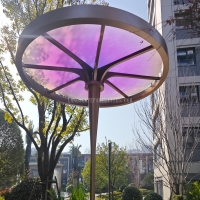Welcome to the website for landscape facilities products and knowledge.
How do manufacturers address the challenge of producing low-carbon-footprint trash cans?
Manufacturers are increasingly adopting innovative strategies to produce low-carbon-footprint trash cans, addressing environmental concerns while maintaining functionality. One key approach is using recycled materials, such as post-consumer plastics or reclaimed metals, which significantly reduce the carbon emissions associated with raw material extraction and processing.
Energy-efficient manufacturing processes also play a crucial role. Many companies now rely on renewable energy sources like solar or wind power in production facilities, minimizing reliance on fossil fuels. Additionally, optimizing supply chains by sourcing materials locally helps cut transportation-related emissions.
Design innovations further contribute to sustainability. Lightweight yet durable constructions reduce material usage without compromising strength, while modular designs allow for easy repair and recycling at the end of the product's life cycle. Some manufacturers even incorporate biodegradable components for certain parts of the trash can.
Certifications like Cradle to Cradle or Environmental Product Declarations (EPDs) provide transparency about a product's environmental impact, helping consumers make informed choices. Through these combined efforts, the waste management industry is making significant strides toward reducing its carbon footprint one trash can at a time.
Related search:

Recommendation
Metal frame with gradient color acrylic combined with high-end shading landscape facilities